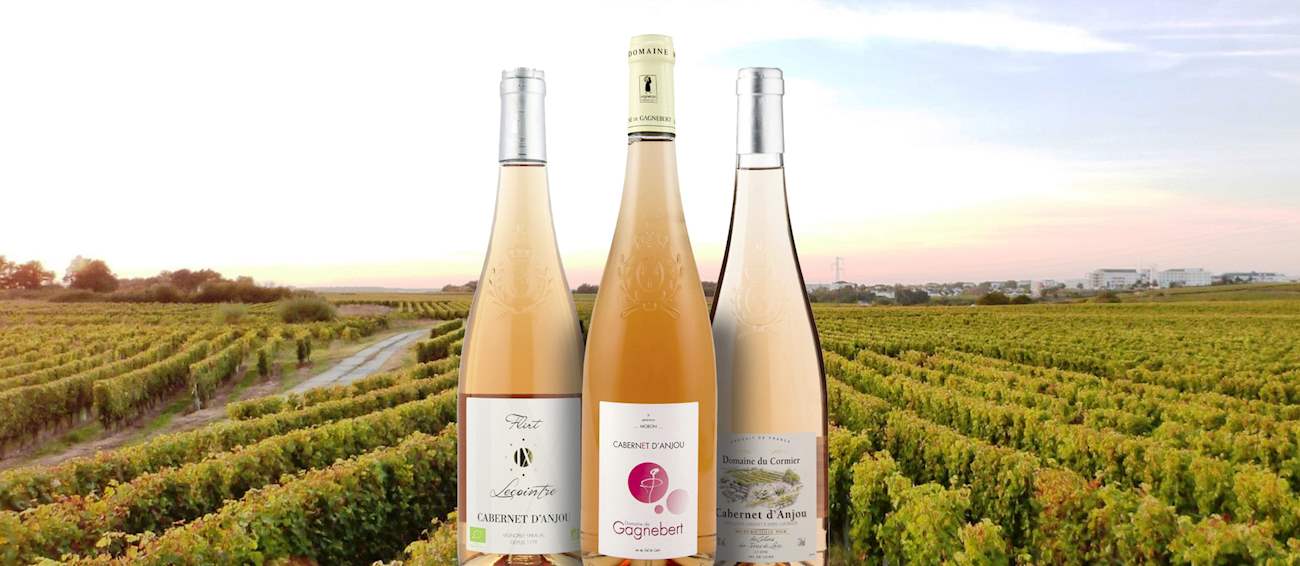Crème de menthe is a liqueur that is flavored with mint (menthe). Although it is typically bright green, it also comes in a colorless (white) version. While traditional technique includes steeping dried mint leaves in alcohol, some styles are also made with mint extract and alcohol.
The green color may be imparted by the addition of mint leaves or with artificial coloring. French pharmacist Emile Giffard is often cited as the inventor of crème de menthe. In 1885, he allegedly first served his creation to the guests at the Grand Hotel in Angers.
Cabernet d'Anjou is a French appellation located in Anjou, mainly in Maine-et-Loire, which it is exclusively reserved for rosé wines made from Cabernet Sauvignon and Cabernet Franc. These bright and clear wines are typically deep pink with salmon hues.
They are vibrant, dense, velvety, and smooth, while typical aromas include red fruit and roses. Cabernet d'Anjou wines are praised for their well-balanced acidity and tannic structure, and though they are usually enjoyed young, some examples can age well.
Located in the Loire Valley, Saumur-Champigny is a French appellation and the sub-region of Samur. The name is used only for the finest Saumur wines that are mainly based on Cabernet Franc, while other permitted varieties include Cabernet Sauvignon and Pineau d'Aunis.
The wines produced in the region are straightforward reds characterized by their intense ruby color and notes of red and dark berries that are complemented by nuances of violets, iris, undergrowth, and spices. These full-bodied wines have supple and well-structured tannins.
This classic triple sec was created by the Cointreau brothers, who managed to distill sweet and bitter orange peels to create a slightly sweet, fresh liqueur with incredibly concentrated flavor. The brand was first registered as triple sec in 1885, and since then it has remained one of the best-selling, premium options. Cointreau is mainly used as the essential ingredient in various cocktails such as the classics Sidecar, Margarita, or Cosmopolitan.
TasteAtlas food rankings are based on the ratings of the TasteAtlas audience, with a series of mechanisms that recognize real users and that ignore bot, nationalist or local patriotic ratings, and give additional value to the ratings of users that the system recognizes as knowledgeable. TasteAtlas Rankings should not be seen as the final global conclusion about food. Their purpose is to promote excellent local foods, instill pride in traditional dishes, and arouse curiosity about dishes you haven’t tried.




